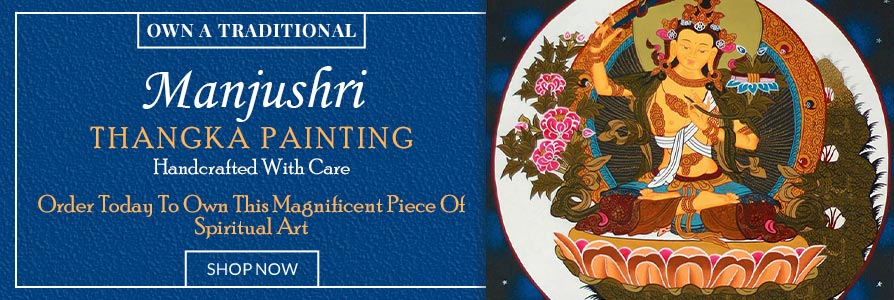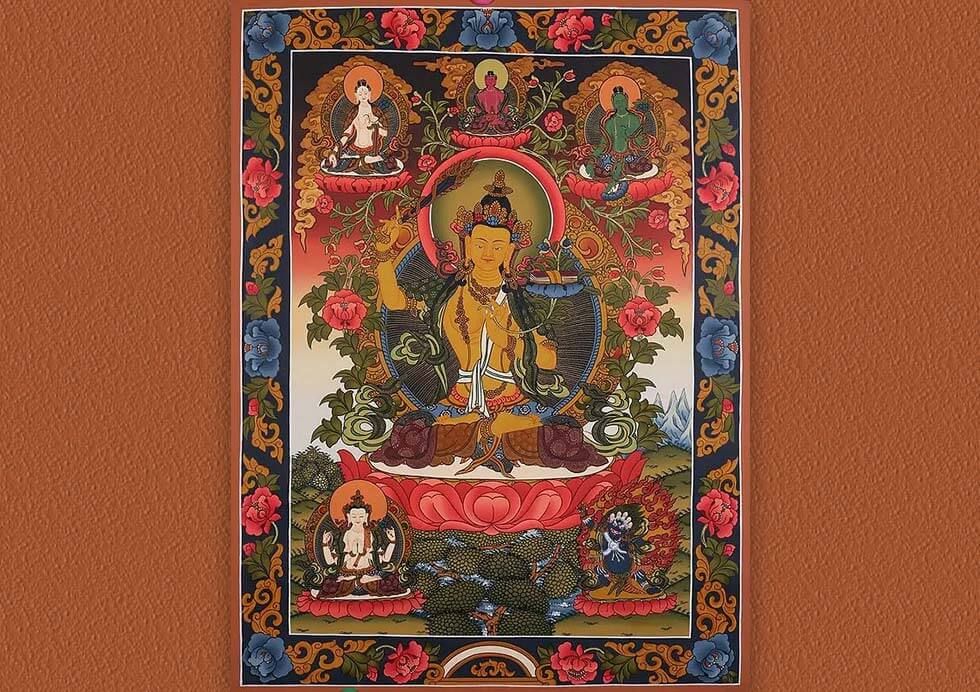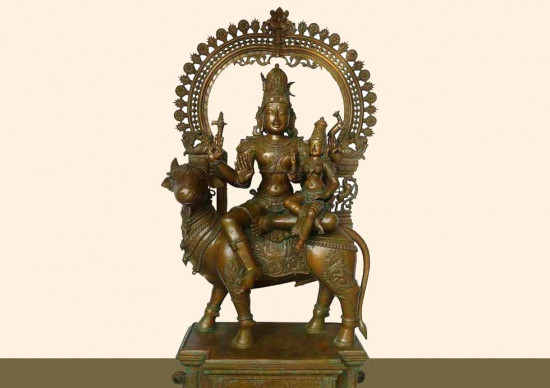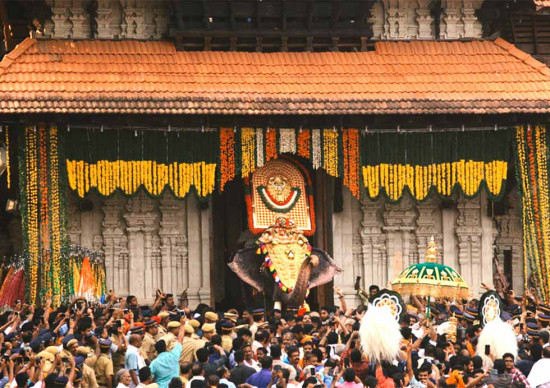In the realms of Mahayana Buddhism, the bodhisattva Manjushri stands as a radiant symbol of wisdom, intelligence, and enlightenment. Depicted wielding a sword that cuts through the shadows of ignorance and holding a scripture embodying profound teachings, Manjushri beckons seekers on a transformative journey. Let’s delve into the story of Manjushri’s encounter with the demon Mara, exploring the profound lessons and timeless wisdom embedded in this captivating narrative.
The Symbolism of Manjushri
Manjushri, often visualized with a sword and scripture, encapsulates the essence of transcendent wisdom. The sword represents the sharpness of insight that slices through the veil of ignorance, while the scripture symbolizes the teachings that illuminate the path to enlightenment. Devotees across Buddhist traditions revere Manjushri, seeking guidance and blessings in their quest for knowledge and understanding.

Iconography of Manjushri
Mañjuśrī, a revered bodhisattva in Buddhism, is rich in symbolism, and his iconography conveys profound meanings associated with wisdom and enlightenment.
- Flaming Sword: In his right hand, Mañjuśrī wields a flaming sword, symbolizing the realization of transcendent wisdom. This sword cuts through ignorance and duality, leading to clarity and understanding.
- Prajñāpāramitā Sūtra: Held in his left hand, Mañjuśrī supports a scripture, often identified as a Prajñāpāramitā sūtra. This signifies his attainment of ultimate realization through the blossoming of wisdom.
- Padma (Lotus): The lotus, held by Mañjuśrī, represents purity and the unfolding of wisdom. It supports the scripture and reinforces the idea of blossoming enlightenment.
- Blue Lion: Mañjuśrī is often depicted riding on a blue lion or sitting on a lion’s skin. This imagery symbolizes the use of wisdom to tame the mind, analogous to subduing a ferocious lion.
- Ruyi Scepter: In Chinese and Japanese Buddhist art, Mañjuśrī’s sword may be replaced with a ruyi scepter, especially in depictions of his Vimalakirti Sutra discussion. The ruyi symbolizes authority and good fortune.
- Association with Other Bodhisattvas: Mañjuśrī is recognized as one of the Four Great Bodhisattvas of Chinese Buddhism, alongside Kṣitigarbha, Avalokiteśvara, and Samantabhadra. In Tibetan Buddhism, he may be depicted in a trinity with Avalokiteśvara and Vajrapāṇi.
- Pairing with Samantabhadra: In Chinese Buddhism, Mañjuśrī is often paired with Samantabhadra, representing the complementary qualities of wisdom and virtuous action.
This detailed iconography provides a visual narrative of Mañjuśrī’s role in guiding practitioners toward wisdom and enlightenment. Each element in the depiction carries layers of symbolic significance, offering devotees a contemplative path to understanding the bodhisattva’s teachings.
Manjushri and the Demon Mara

The narrative unfolds with Manjushri setting out to confront Mara, the formidable demon of ignorance. Mara, with his dark and deceptive powers, sought to obstruct the journey of truth-seekers. Undeterred by the looming threat, Manjushri armed himself not with physical might but with the radiant sword of wisdom.
As the two clashed in the cosmic space, the air crackled with tension, and the clash of ideas echoed. With each swing of his sword, Manjushri effortlessly dismantled the veils of ignorance woven by Mara. The brilliance of Manjushri’s insight dispelled illusions, leaving Mara exposed and vulnerable.
In a surprising turn of events, Mara, recognizing the futility of his misguided ways, surrendered to the illuminating wisdom of Manjushri. The once formidable adversary became a devoted disciple, eager to embrace the teachings of enlightenment. This unexpected transformation speaks volumes about the power of wisdom to convert darkness into light.
The victory of wisdom over ignorance resonates through the ages, inspiring seekers on their individual journeys of self-discovery. Manjushri’s triumph becomes a timeless tale, a reminder that even in the face of darkness, the light of wisdom prevails. The story transcends its cultural and religious roots, offering universal lessons on the transformative power of insight and the potential for adversaries to become allies on the path to enlightenment.
As the two clashed in the cosmic space, the air crackled with tension, and the clash of ideas echoed. With each swing of his sword, Manjushri effortlessly dismantled the veils of ignorance woven by Mara. The brilliance of Manjushri’s insight dispelled illusions, leaving Mara exposed and vulnerable.
In a surprising turn of events, Mara, recognizing the futility of his misguided ways, surrendered to the illuminating wisdom of Manjushri. The once formidable adversary became a devoted disciple, eager to embrace the teachings of enlightenment. This unexpected transformation speaks volumes about the power of wisdom to convert darkness into light.
The victory of wisdom over ignorance resonates through the ages, inspiring seekers on their individual journeys of self-discovery. Manjushri’s triumph becomes a timeless tale, a reminder that even in the face of darkness, the light of wisdom prevails. The story transcends its cultural and religious roots, offering universal lessons on the transformative power of insight and the potential for adversaries to become allies on the path to enlightenment.
Conclusion
As we reflect on the legend of Manjushri, we find a compelling narrative that transcends religious boundaries, offering profound insights into the triumph of wisdom over ignorance. Manjushri’s sword of wisdom continues to illuminate the hearts and minds of those who embark on the journey of self-discovery, reminding us that the pursuit of knowledge is a transformative force capable of dispelling the shadows that hinder our path to enlightenment.







